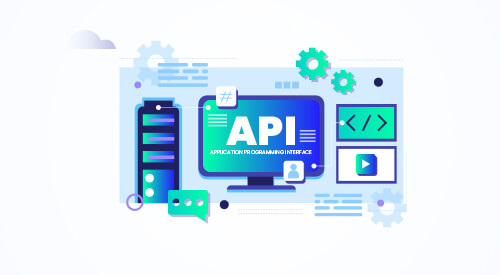

Apigee proxies, the intermediaries between client applications and backend services, enable organizations to expose their services in a secure, controlled, and scalable way. When developing Apigee proxies, a solid branching strategy is crucial for ensuring smooth collaboration, proper testing, and structured deployment. A branching strategy impacts the way changes are managed, new features are released, and issues are dealt with in the production environment. In this blog, we’ll compare two popular branching strategies: one that uses feature branches, environment branches, and a main product branch, and another approach called trunk-based development. We will explore how each strategy fits into the unique requirements of Apigee proxy development, along with its pros and cons.
Ensure Smooth Apigee Proxy Deployments
Branching Strategy in Apigee Proxy Development
API proxies are crucial to API management as they are a layer of abstraction between service providers and API consumers. These proxies also engage in routing, security, transformation and monitoring among other responsibilities. Given the complexity and impact of Apigee proxies on an organization’s API ecosystem, a well-structured branching strategy becomes necessary for several reasons:
Collaboration: Multiple developers often work on the same proxies simultaneously. A branching strategy helps prevent conflicts and ensures code changes are isolated until they are ready to be merged.
Testing: Proxies must be tested in different environments (e.g., development, staging, production) to ensure they behave as expected under various conditions. A branching strategy supports proper testing workflows.
Deployment: Deploying to different environments requires careful management. The branching strategy helps ensure that changes are deployed to the right environment at the right time.
Versioning: Over time, proxies evolve as new features are added or bugs are fixed. A branching strategy helps manage different versions of the proxies, ensuring that previous versions can be maintained or rolled back if necessary.
With these needs in mind, let’s dive into the two branching strategies we’re comparing.
Feature Branches, Environment-Specific Branches, and a Main Product Branch
This strategy involves creating feature branches for new proxy features, environment-specific branches for testing and deployment, and a main product branch for stable releases. The goal is to ensure that development happens in isolation, testing is done in a controlled manner, and production releases are stable and thoroughly tested.
Workflow Details:
Feature Branches: Each new feature or bug fix is developed in its own branch. Developers work in isolation on their respective branches, minimizing conflicts with other ongoing work. Once the feature is complete and tested locally, it is merged into the appropriate environment-specific branch (e.g., `dev`, `staging`).
Environment-Specific Branches: These branches correspond to different environments in your CI/CD pipeline. For instance, a `dev` branch is used for development and testing in a development environment, a `staging` branch is used for staging, and a `prod` branch is used for production. Once a feature is tested in one environment, it is merged into the branch corresponding to the next environment.
Main Product Branch: The `main` branch (or `master`) represents the production-ready code. Once features have been thoroughly tested in all environments, they are merged into this branch and deployed to production.
Advantages:
- Isolation of Work: Developers can work on their own features without worrying about conflicts with others. This improves focus and reduces the risk of merging unfinished code.
- Controlled Testing: By maintaining separate branches for different environments, you can ensure that only stable, tested code is promoted to production. This reduces the risk of introducing bugs or untested features into production.
- Version Control: Environment-specific branches make it easy to manage different versions of the code. You can quickly switch between versions or roll back if necessary.
Limitations:
- Complexity: This strategy requires careful management of multiple branches, which can become complex, especially in larger teams. Developers need to be diligent about keeping their branches up to date and merging them in the right order.
- Delayed Integration: Features may not be integrated into the main product branch until they have been fully tested, which can lead to delays in releasing new features. Additionally, long-lived feature branches can become outdated and require frequent rebasing or merging with the latest changes from other branches.
Suitability Recommendation:
This strategy is best suited for teams working on larger, more complex Apigee proxy projects where strict testing and release management processes are essential. It is particularly beneficial when different environments require thorough testing and when the team needs to ensure that only fully vetted code reaches production.
Trunk-Based Development
Trunk-based development is a simpler, more streamlined approach where developers work directly on a single main branch (often called the `trunk`). Instead of long-lived feature branches, developers commit changes directly to the main branch, and these changes are frequently integrated. Once the code is tested, the branch is merged with the main branch.
Workflow:
Single Branch
All development happens on the `main` branch or trunk. Developers commit small, incremental changes to the branch, ensuring that it is always in a deployable state. There are no long-lived feature branches; instead, work is integrated frequently, sometimes multiple times a day.
Frequent Integration
Developers commit frequent changes to the main branch, which ensures that they are integrated with the latest code. This reduces any risk of merge conflicts and keeps the codebase in a stable, deployable state.
Automated Testing and CI/CD
As trunk-based development relies on frequent integration, automated testing and continuous integration/continuous deployment (CI/CD) pipelines play a crucial role. Every commit triggers a series of automated tests, and successful tests can automatically deploy code to the appropriate environment.
Advantages:
- Simplicity: This strategy is straightforward, with only a single branch to manage. It reduces complexity and makes it easier to keep the codebase up to date.
- Continuous Delivery: Frequent integration means that new features and bug fixes can be deployed quickly. The codebase is always in a deployable state, enabling rapid release cycles.
- Reduced Merge Conflicts: By integrating frequently, developers reduce the risk of running into large, complex merge conflicts. Conflicts are addressed early, rather than at the end of a long-lived feature branch.
- Collaboration: Trunk-based development encourages collaboration and communication among team members. Since everyone is working on the same branch, developers must coordinate their efforts and ensure that their changes do not disrupt others.
Limitations:
- Higher Risk: Committing directly to the main branch means that developers must be confident that their changes will not break the codebase. Automated testing helps mitigate this risk, but it requires a high level of discipline and robust testing practices.
- Less Isolation: Developers do not have the luxury of working in isolation on long-lived feature branches. This can be challenging for complex features that require more time to develop and test. However, developers can still use short-lived branches for more significant changes if needed.
- Requires Robust CI/CD: Trunk-based development relies heavily on automation. Without a robust CI/CD pipeline in place, it can be difficult to maintain the stability of the main branch.
Suitability Recommendation:
It is most effective when the focus is on frequently delivering new functionality and iterations of the product. It is suitable if there are few members in the team working on simple proxies, and the goal is to release new features and fixes as soon as possible. This strategy proves to be efficient in environments that welcome collaboration and frequent deliveries in preference to rigid planning and work silos, typically associated with agile processes.
Comparison: Which Strategy Should You Choose?
The decision between these two branching strategies depends on the needs of your team, the complexity of your Apigee proxies, and your release management processes. Below is a high-level comparison to help you choose the right strategy for your team:
| Factor | Feature Branches & Environment-Specific Branches | Trunk-Based Development |
| Complexity | Higher complexity with multiple branches | Lower complexity with a single branch |
| Testing and Release Control | Strict testing and release control through environment-specific branches | Automated testing with rapid releases |
| Feature Isolation | High isolation with feature branches | Less isolation, but short-lived branches can be used |
| Deployment Frequency | Slower, controlled releases | Faster, more frequent releases |
| Collaboration | Requires careful coordination and branch management | Encourages continuous collaboration and communication |
| Risk | Lower risk with controlled releases | Higher risk, mitigated by robust CI/CD pipelines |
| Team Size | Suitable for larger teams with complex workflows | Suitable for smaller teams focused on agility |
Conclusion
When developing Apigee proxies, both branching strategies offer unique benefits and challenges. If your team is working on a complex project that requires strict control over releases and multiple testing environments, the strategy involving feature branches, environment-specific branches, and a main product branch might be the right choice. This strategy provides isolation, controlled testing, and versioning but comes with higher complexity and potential delays.
On the other hand, if your team values rapid iteration, frequent releases, and collaboration, trunk-based development could be a better fit. This approach reduces complexity, encourages frequent integration, and enables faster delivery, but it requires a robust CI/CD pipeline and disciplined development practices to manage the associated risks.
Ultimately, the choice depends on your team’s needs, the complexity of your Apigee proxies, and your goals for release management. Carefully consider your workflows, and choose the strategy that best aligns with your objectives.











